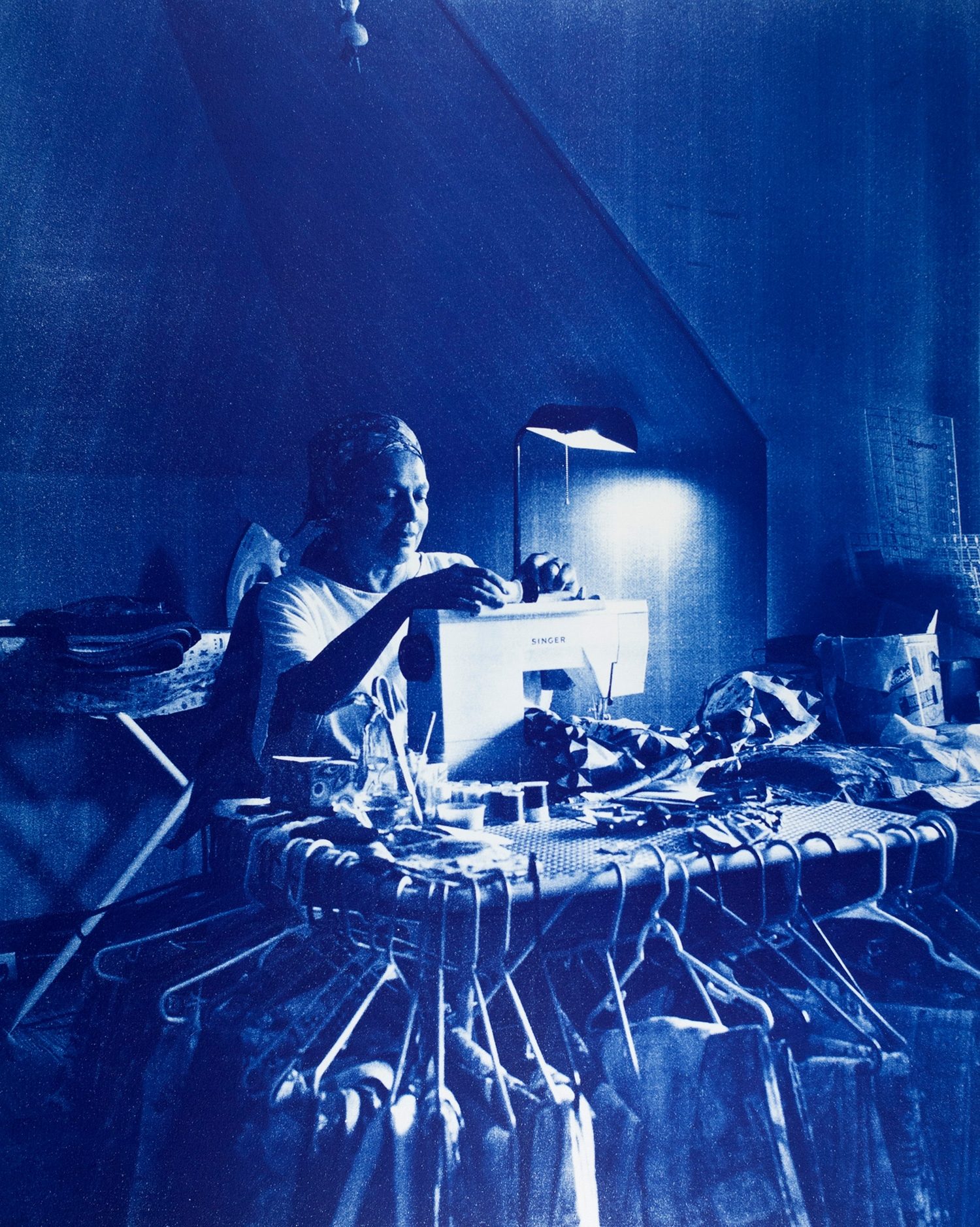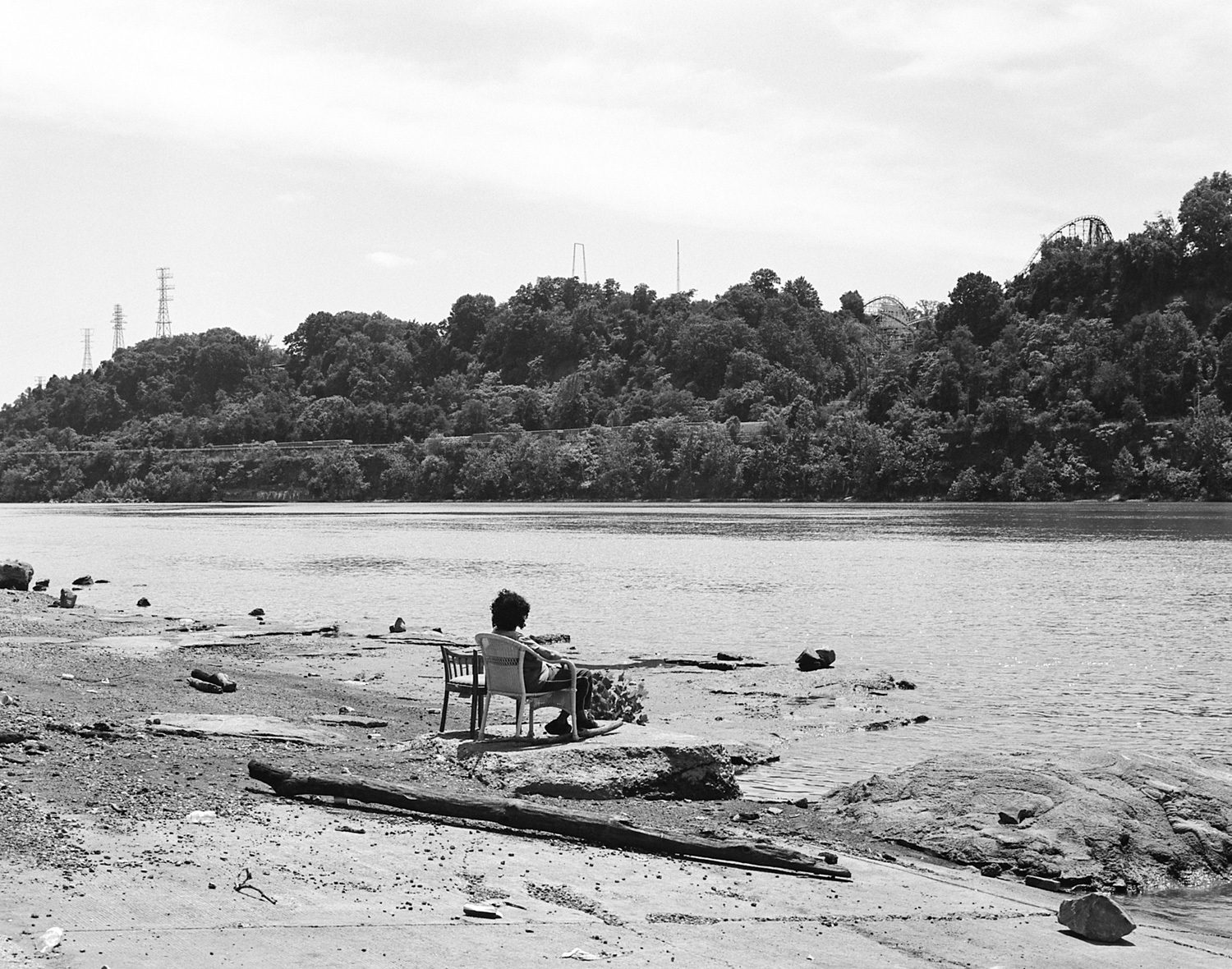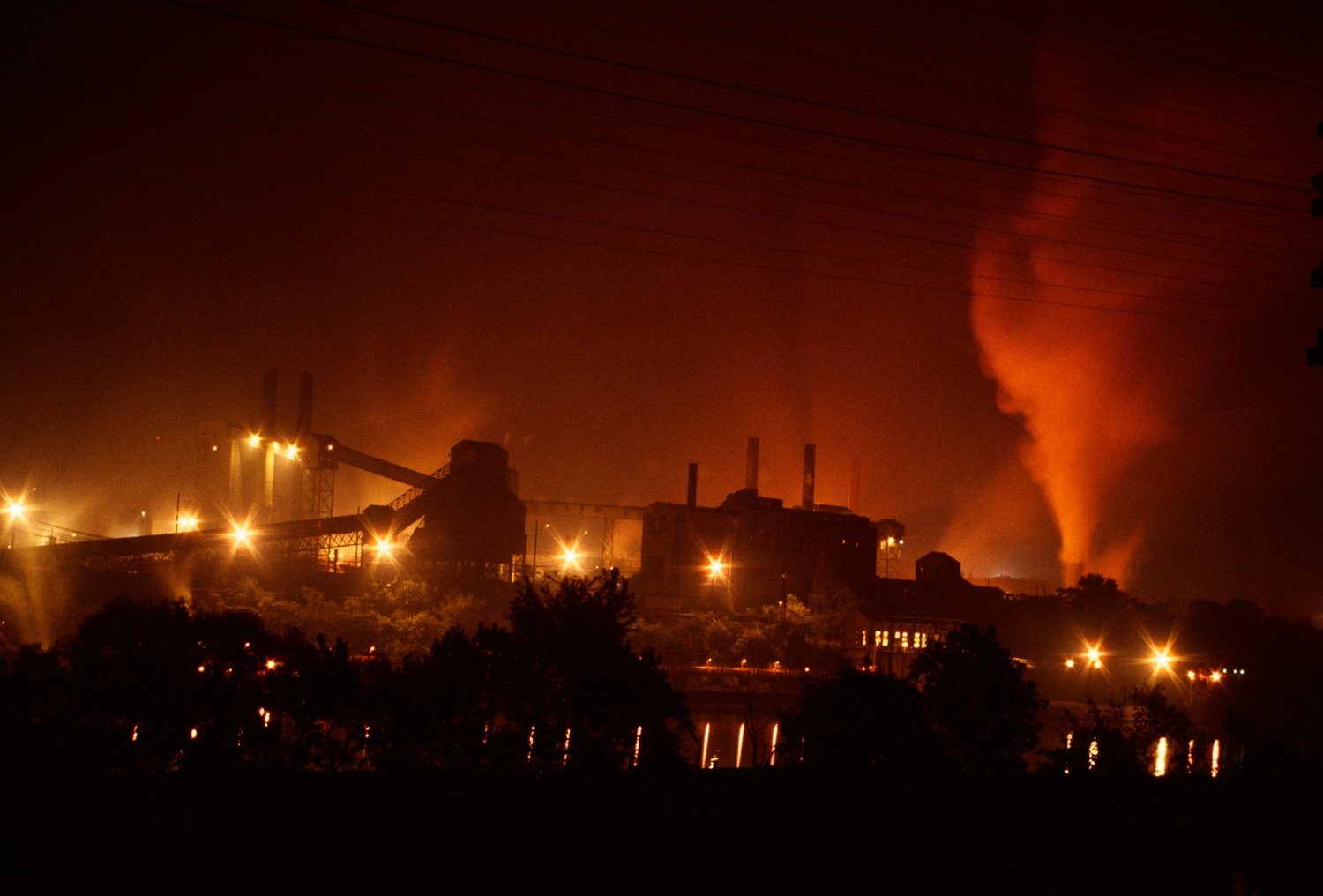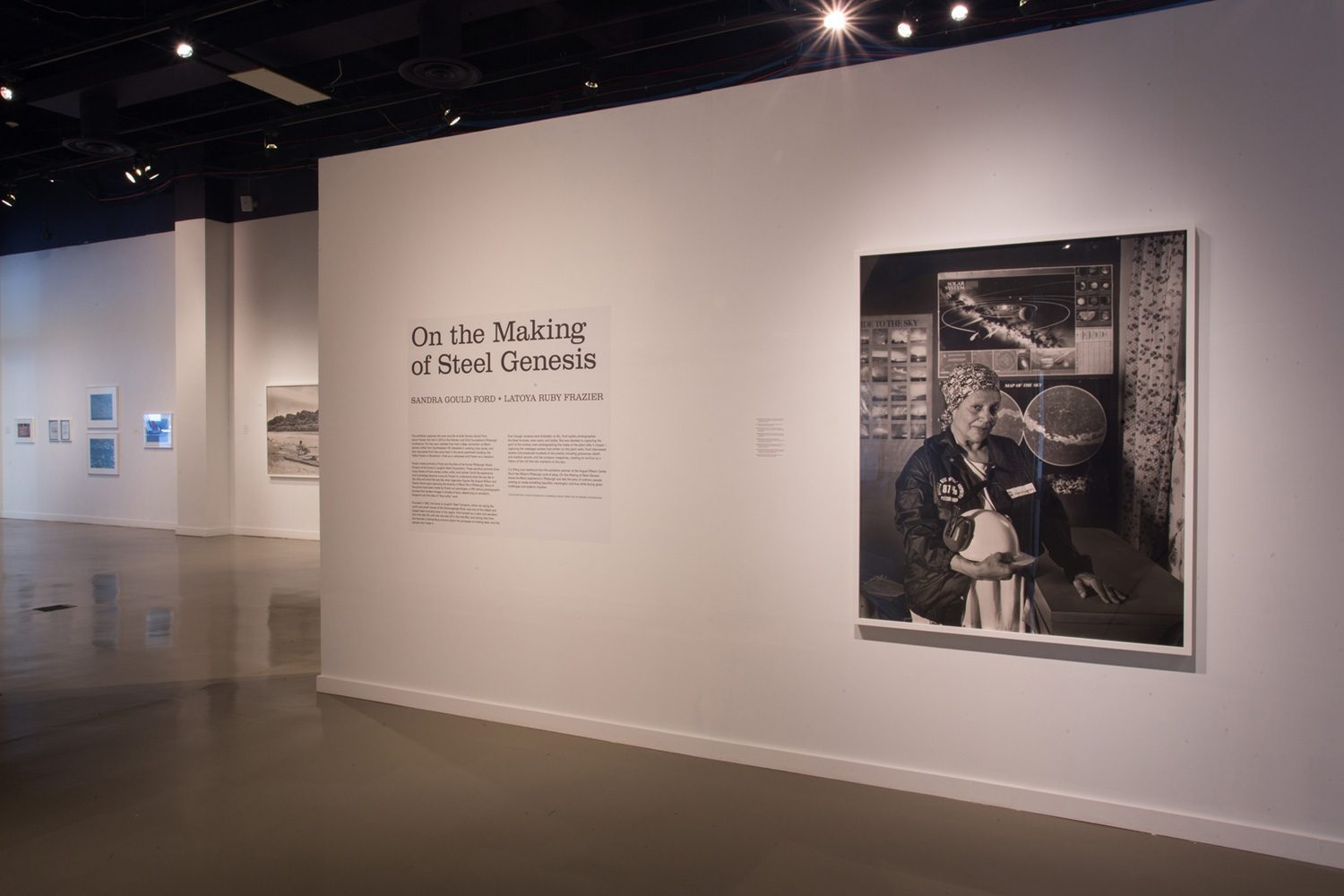Sep 22–Dec 31, 2017
The August Wilson Center
On the Making of Steel Genesis: Sandra Gould Ford is a collaborative exhibition that explores the work and life of artist Sandra Gould Ford, whom Frazier first met in 2015 at the Women and Girls Foundation’s Pittsburgh Conference. They soon realized they had a deep connection as Black women artists from Southwestern PA interested in working class issues. They discovered that they once lived in the same apartment building, the Talbot Towers in Braddock—Ford as a newlywed and Frazier as a newborn.
This significant exhibition brings together dozens of works from each artist in several mediums: photographs, writings, documents, and videos. Many of the prints have been made by Frazier as cyanotypes, a 19th century photographic process that renders images in shades of blue, referencing an architect's blueprint and the idea of “blue collar” work. Early cyanotypes of plants were used as scientific records by botanists, creating images that fell between document and artwork.
For this exhibition, Frazier made portraits of Ford and the sites of the former Pittsburgh Works Division of the Jones & Laughlin Steel Corporation, which ran along the north and south shores of the Monongahela River for about three and a half miles. These sensitive portraits show many facets of Ford: worker, writer, artist, and mother. Ford’s life experience and knowledge became a way for Frazier to understand what life was like in the mills and what life was like when legendary figures like August Wilson and Teenie Harris were capturing the diversity of Black life in Pittsburgh. Frazier’s breathtaking aerial views show how Pittsburgh has changed--with new condos, retail centers, and barren fields, replacing the factories.
Ford had worked as a clerk and secretary at the Jones and Laughlin Steel Company. Founded in 1852, J&L was one of the oldest and largest steel manufacturers in the region. From the late-70s until she was laid off in the mid-80s, Ford learned a tremendous amount about the processes of making steel, and the people who made it. At J&L, cameras were forbidden, however, Ford quietly photographed the blast furnaces, coke ovens, and ladles. Devoted to capturing the spirit of the workers, she diligently photographed inside the plant after it closed. Empathetic for the workers of J&L, Ford carefully photographed the messages they wrote on the plant walls, like “Goodbye Louie” and “Pensions Please.” She also interviewed workers and preserved hundreds of documents, including grievances, death and medical records, and the company magazines.
Ford continues to maintain this archive of photographs, documents, and writings as a history of the mill, a reflection on making steel, and her personal genesis. Excerpts from the archive are included in this exhibition. A renaissance woman, Ford is an artist of many mediums. Her early photographs show influences from W. Eugene Smith, Gordon Parks, and the precisionist paintings of the 1920s, celebrating industry. Later, her photographs depict the dramatic deterioration, and renewal of those lands, in the days and years after the mill closed. These images have an extraordinary eye for the details that were important to those who worked in the factory.
The vibrant conversations that arise from this collaboration speak to the nuances of this region and its history. Fascinated by alchemy, Ford uses the idea of changing lead to gold as a metaphor in her work: turning light and silver into photographs, turning base minerals into steel. Ford also saw a kind of alchemy in this collaboration between Frazier’s concern with conditions that limit humans and Ford’s interest in transcending those conditions.
It is fitting and intentional that this exhibition premier at the August Wilson Center. Much like Wilson’s Pittsburgh cycle of plays, On the Making of Steel Genesis shows the Black experience in Pittsburgh and tells the story of ordinary people working to create something beautiful, meaningful, and true while facing great challenges and systemic injustice.
This exhibition is made possible by a generous grant from The Pittsburgh Foundation. The cyanotypes in this exhibition were created through the generous use of the production space at Pittsburgh Filmmakers/Pittsburgh Center for the Arts.
Participating Artists
Sandra Gould Ford is an award-winning author, artist, and accomplished educator who presents writing and arts experiences that encourage, refresh, enrich creative thinking, and inspire. Her first novel, Faraday's Popcorn Factory, was published by St. Martin's Press. Ford has won several writing awards, including the Nelson Algren and Writer's Digest. Ford has also received a Creative Writing Fellowship from the Pennsylvania Council on the Arts and from The Pittsburgh Foundation, and she has been awarded a Dow Creativity Center Fellowship and residencies from the Ucross Foundation, Yaddo, Hedgebrook, Ragdale, Millay, and Dorland. Ford founded Shooting Star Productions, and the Shooting Star Review, a quarterly illustrated, literary magazine that was published for ten years. Ford’s photographs have been published in Talk Magazine and the New Pittsburgh Courier, and her writing has accompanied her photography in the Pittsburgh Post Gazette, Pittsburgh Press, and Pittsburgh Magazine. Ford holds a master's degree in Creative Writing from the University of Pittsburgh.
LaToya Ruby Frazier (b. 1982) works in photography, video, and performance in order to build visual archives that address industrialism, rustbelt revitalization, environmental justice, health care inequity, family, and communal history. She received the John D. and Catherine T. MacArthur Foundation Fellows Award in 2015. Her work is exhibited widely in the U.S. and internationally.











